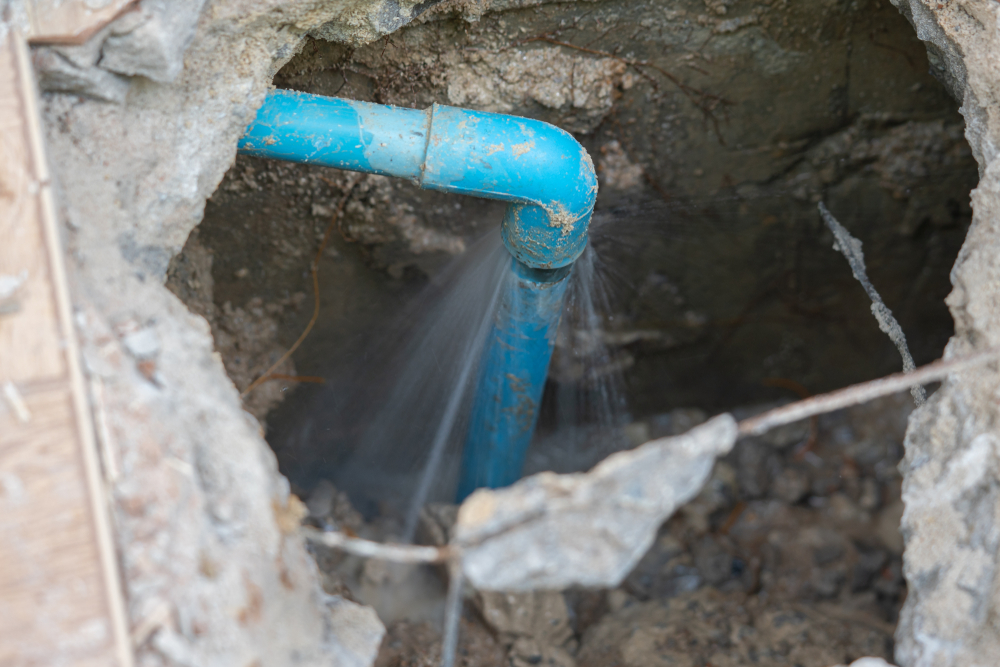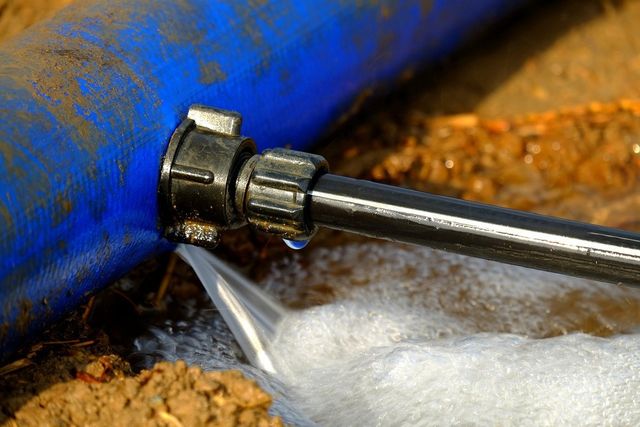What're your opinions on Detecting hidden plumbing leaks?

Early detection of leaking water lines can reduce a prospective disaster. Some little water leaks might not be noticeable.
1. Check Out the Water Meter
Every residence has a water meter. Examining it is a guaranteed manner in which aids you find leaks. For beginners, turn off all the water resources. Make sure no person will purge, utilize the faucet, shower, run the cleaning device or dish washer. From there, go to the meter as well as watch if it will change. Since nobody is using it, there need to be no activities. If it relocates, that indicates a fast-moving leak. Likewise, if you find no changes, wait a hr or more as well as check back once again. This means you may have a slow leakage that might even be underground.
2. Examine Water Usage
If you find unexpected changes, in spite of your intake being the very same, it indicates that you have leakages in your plumbing system. An unexpected spike in your costs indicates a fast-moving leakage.
On the other hand, a stable rise every month, even with the exact same behaviors, reveals you have a slow leak that's also gradually rising. Call a plumber to completely examine your home, particularly if you really feel a cozy area on your floor with piping beneath.
3. Do a Food Coloring Test
30% comes from toilets when it comes to water consumption. Examination to see if they are running correctly. Decline specks of food shade in the tank as well as wait 10 mins. There's a leak in between the storage tank and also bowl if the shade in some way infiltrates your dish during that time without flushing.
4. Asses Exterior Lines
Don't fail to remember to examine your outdoor water lines too. Test spigots by affixing a yard pipe. Must water seep out of the link, you have a loose rubber gasket. Replace this and make certain all links are limited. If you've got a lawn sprinkler, it will certainly aid get it properly examined and maintained annually. One tiny leak can throw away lots of water as well as spike your water bill.
5. Inspect and also Analyze the Situation
Home owners should make it a practice to inspect under the sink counters as well as even inside closets for any kind of bad odor or mold and mildew development. These 2 red flags suggest a leakage so punctual focus is required. Doing routine assessments, also bi-annually, can conserve you from a significant issue.
Check for stainings as well as weakening as the majority of pipes and also home appliances have a life span. If you believe leaking water lines in your plumbing system, don't wait for it to rise.
Early detection of leaking water lines can alleviate a possible calamity. Some tiny water leakages may not be noticeable. Inspecting it is a proven method that aids you find leakages. One tiny leakage can waste bunches of water and increase your water bill.
If you presume dripping water lines in your plumbing system, don't wait for it to escalate.
How to Know If Your Home Has a Hidden Leak
Water Meter Reveals Inexplicable Water Usage
If you’d like to test whether or not there’s a leak somewhere in your home, you can do this using your water meter. Here is how to conduct the test:
Don’t use any water in your home for at least 30 minutes; this also means not turning on faucets or water-using appliances.
Go outside, and check your water meter for activity.
If your water meter shows that there was activity, even though no one was using any water, this proves that there is a leak in your home.Visible Mold or Mildew Growth
Leaks behind walls create moist, dark environments that allow mold and mildew to grow and thrive. Eventually, you might see mold growth forming on the wall closest to a hidden leak.
If mold is growing in an area that receives a high amount of moisture, such as a bathroom, it may simply be an indication that better ventilation is needed. However, if you see mold growth on a wall or the ceiling in an area where you would not expect, you probably have a hidden leak.
Musty, Mildew Odor
Sometimes you might not be able to see the mold or mildew that is growing as a result of a leak. However, the smell can give the problem away just as easily. If you catch a whiff of something musty, there’s a good chance that old water is collecting somewhere in your home that you can’t see.
Stained/Warped Walls, Ceilings, or Floors
When your home soaks up water, a variety of red flags can become visible, including ceiling stains, bubbling drywall, warped walls, and sagging floors. While these issues can be caused by excess humidity, they can also be signs that a pipe or plumbing connection has started leaking behind your walls.
Inexplicably High Water Bill
After a while, you get a general sense for what your water bill should be. If you own a pool or sprinkler system, your bill will tend to be higher during summer. However, if you receive a water bill that seems especially high, and you can’t figure out what caused it, then you may have a hidden leak somewhere that’s increasing your bill.
https://www.plumbingjoint.com/blog/2019/july/how-to-know-if-your-home-has-a-hidden-leak/

I discovered that piece about Locating water leaks when doing a search on the web. Enjoyed reading our piece of writing? Please share it. Let other people find it. Thank-you for taking the time to read it.
Prompt service? Call here.